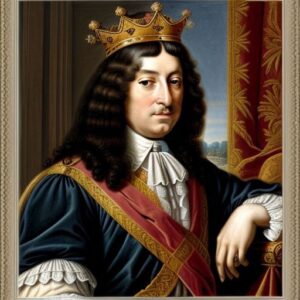In the annals of history, few monarchs shine as brightly as Louis XIV, the Sun King. Ascending to the throne at just four years old in 1643, Louis XIV’s reign lasted a staggering 72 years, making him the longest-reigning king in European history. His reign epitomized absolute monarchy, a political doctrine where the king held unrivaled authority. Louis XIV famously declared, “L’État, c’est moi” (I am the state), encapsulating his belief in the divine right of kings. Under his rule, France became a dominant European power, both politically and culturally.
One of Louis XIV’s most lasting legacies is the magnificent Palace of Versailles. Originally a humble hunting lodge, he transformed it into a resplendent symbol of his power and influence. Versailles became the political heart of France, where courtiers vied for the king’s favor amidst its opulent halls and meticulously manicured gardens. Louis XIV’s court was the center of fashion, art, and architecture, influencing trends across Europe. His patronage of the arts fostered the careers of luminaries like Molière and Lully, further cementing France’s cultural dominance.
Yet, Louis XIV’s reign was not without challenges. His aggressive foreign policies led to numerous wars, straining France’s finances and leading to widespread suffering. Despite these challenges, the Sun King’s legacy endured. His vision of a centralized state and his dedication to the arts and architecture have left an indelible mark on France and the world. Louis XIV’s reign remains a testament to the power and complexities of absolute monarchy.

